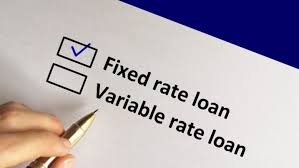Personal loans are a popular financial product that individuals use to meet various personal needs, including consolidating debt, financing home improvements, covering medical expenses, or paying for large purchases. One of the most important factors when considering a personal loan is the interest rate, which can significantly impact your overall repayment amount. Fixed-rate personal loans are a common choice for many borrowers because they provide stability and predictability. But how do you determine the current fixed-rate personal loan rates available, and how can you ensure you’re getting the best deal?
In this article, we will explore the current fixed-rate personal loan rates, how they are determined, how to shop for the best rates, and important factors that influence the rates. We will also answer common questions and provide tips for getting a personal loan with the best fixed rate.
Key Takeaways
- Fixed-rate personal loans offer stability, with the interest rate remaining the same throughout the term.
- Your credit score plays a major role in determining your interest rate.
- Loan amount, term length, and lender type also affect the rates offered.
- Comparing multiple lenders and pre-qualifying can help you find the best rates.
- Be mindful of loan fees and other terms when evaluating loan offers.
Understanding Fixed-Rate Personal Loans
Before we dive into the current rates, it’s essential to understand what a fixed-rate personal loan is and how it differs from other types of loans.
- Fixed-Rate Loans:
With a fixed-rate loan, the interest rate remains the same throughout the entire loan term. This means that the amount you pay each month (principal plus interest) will stay consistent, providing borrowers with a predictable repayment plan. Fixed-rate loans are generally preferred by borrowers who want stability in their monthly payments. - Variable-Rate Loans:
In contrast, a variable-rate loan has an interest rate that can change during the loan term. Typically, the rate starts lower than that of a fixed-rate loan, but it can rise over time, potentially increasing monthly payments. Variable-rate loans can be more flexible, but they carry a higher degree of uncertainty.
Fixed Interest Rates vs Floating Interest Rates – Which is better?
| Fixed interest rate | Floating interest rate |
| Interest rates remain constant | Interest rate can change depending on the fluctuation in the market |
| Your EMI payable will remain the same throughout the repayment tenure | Your EMI payable is likely to change during the repayment tenure. |
| You are likely to be charged a prepayment charge if you prepay your loan | You may not be charged a prepayment charge if you prepay your loan |
| Not linked to MCLR | Linked to MCLR |
The benefit of opting for a fixed interest rate is that you know exactly how much you will be charged during the loan tenure. Thus, those who wish to plan their finances in advance can opt for a fixed interest rate.
If you, however, don’t mind a fluctuating interest rate, you can opt for a floating/variable interest rate. The benefit of opting for a variable interest rate is that your repayment amount will reduce when the interest rate is low.
Current Fixed-Rate Personal Loan Rates

As of 2025, the fixed-rate personal loan rates vary depending on several factors, including your credit score, income, loan amount, term length, and the lender. Generally, the fixed rates range from 5% to 36%. However, rates can be higher or lower based on individual circumstances.
Key Factors Affecting Fixed-Rate Personal Loan Rates:
- Credit Score:
Your credit score is one of the most significant factors in determining your interest rate. Borrowers with excellent credit scores (typically 740 or above) are likely to receive the lowest rates, while those with poor credit may face higher rates. - Loan Term:
The length of the loan term can also influence your interest rate. Loans with shorter terms tend to have lower interest rates because they represent less risk for lenders. On the other hand, longer-term loans may have higher rates due to the extended repayment period. - Loan Amount:
Larger loans may have lower interest rates, as lenders are typically more willing to offer favorable terms for higher amounts. Conversely, smaller loans may come with higher interest rates due to the perceived higher risk for lenders. - Income and Debt-to-Income Ratio:
Lenders will look at your income and debt-to-income ratio (DTI) to assess your ability to repay the loan. A higher income and a lower DTI typically result in lower interest rates because they signal financial stability. - Lender Type:
Different lenders offer different rates. Online lenders, credit unions, and traditional banks may have varying rates depending on their business models and target market. Online lenders, for example, tend to offer more competitive rates than traditional banks.
Personal Loan Interest Rates of Top Lenders

Prospective personal loan applicants should check and compare the interest rates and other features of personal loan schemes offered by multiple lenders before making the final loan application. The personal loan interest rates offered by some of the major public and private sector banks are as follows:
SBI Personal Loan Interest Rate
The interest rates offered by SBI on their personal loan schemes start from 11.45% p.a. The lender sets the interest rate for loan applicants primarily based on the type of loan scheme, applicants’ employment profile, employer profile, and existing salary account relationship.
Interest Rates:
- Xpress Elite Scheme: 11.45% – 11.95% p.a.
- Xpress Credit Personal Loan: 11.45% – 14.60% p.a.
- Xpress Flexi Scheme: 11.70% – 14.85% p.a.
- Pre-approved Personal Loan: 14.10% – 14.60% p.a.
HDFC Bank Personal Loan Interest Rate
Prospective personal loan applicants can opt for HDFC Bank personal loan at an interest rate of 10.85% p.a. onwards. The interest rate set by the lender for their loan applicants depends on many factors including their credit/CIBIL score, tenure, loan amount, income, etc.
Interest Rates:
- For Salaried: 10.85 – 24.00% p.a.
- Home Renovation: 10.85 – 24.00% p.a.
- Marriage Loan: 10.85 – 24.00% p.a.
- For Teachers: 10.85 – 24.00% p.a.
- Personal Loan Balance Transfer: 10.85% p.a.
- For Government Employees: 10.85 – 24.00% p.a.
BoB Personal Loan Interest Rate
The personal loan schemes offered by Bank of Baroda can be availed at interest rates starting from 11.05% p.a. The lender offers differentiated interest rates for their loan applicants primarily based on their employment profile, occupation profile, existing account relationship, if any, scheme type opted for, and salary account relationship, if any.
Interest Rates:
- Loan to pensioners: 12.15% p.a. (digital) and 12.65% p.a. (non-digital)
- Baroda Digital Pre-approved Personal Loan: 12.90% – 16.40% p.a.
- Baroda Digital Personal Loan: 12.90%- 18.25%
Current Market Rates:
As of early 2025, the following are the approximate fixed-rate personal loan rates you may encounter:
| Credit Score | Loan Term (Years) | Interest Rate (APR) |
|---|---|---|
| Excellent (750+) | 1-3 | 5% – 9% |
| Good (700-749) | 1-3 | 7% – 12% |
| Fair (650-699) | 1-5 | 10% – 18% |
| Poor (600-649) | 1-5 | 15% – 25% |
| Very Poor (<600) | 1-5 | 20% – 36% |
Note: These rates are estimates and may vary by lender and location. It’s important to check with individual lenders for the most accurate rates.
How to Shop for the Best Fixed-Rate Personal Loan
Now that you understand the factors that affect fixed-rate personal loan rates, it’s time to learn how to shop for the best deal. Follow these steps to ensure you get the best rate possible:
- Check Your Credit Score:
Your credit score plays a critical role in determining your rate. Before applying for a personal loan, check your score through one of the major credit bureaus (Equifax, Experian, or TransUnion). This will give you an idea of the rates you may qualify for. - Compare Multiple Lenders:
Don’t settle for the first rate you come across. Compare personal loan rates from various lenders, including online lenders, traditional banks, and credit unions. Online lenders typically offer lower rates than traditional banks due to their lower overhead costs. - Pre-Qualify for Loans:
Many lenders allow you to pre-qualify for a loan without impacting your credit score. Pre-qualification gives you an idea of the rate you might receive based on your financial situation. Use this tool to narrow down your options before applying for a full loan. - Consider Loan Fees:
In addition to interest rates, look for any fees associated with the loan, such as origination fees or late payment fees. These can increase the overall cost of borrowing, so it’s important to factor them into your decision. - Evaluate Loan Terms:
Ensure the loan term aligns with your financial goals. A shorter-term loan will have higher monthly payments but lower total interest paid, while a longer-term loan will have lower monthly payments but may cost more in interest over time.
Example Scenarios
To illustrate how different credit scores impact loan rates, here are two examples:
Example 1: Sarah’s Excellent Credit
- Credit Score: 770
- Loan Amount: $10,000
- Loan Term: 3 years
- Interest Rate: 6%
- Monthly Payment: $304.62
- Total Interest Paid: $1,098.40
- Total Repayment Amount: $11,098.40
Sarah qualifies for a low interest rate due to her excellent credit score. She enjoys predictable monthly payments, and the total cost of the loan is relatively low.
Example 2: John’s Fair Credit
- Credit Score: 680
- Loan Amount: $10,000
- Loan Term: 5 years
- Interest Rate: 14%
- Monthly Payment: $236.77
- Total Interest Paid: $4,206.26
- Total Repayment Amount: $14,206.26
John’s higher interest rate reflects his fair credit score. Although his monthly payments are lower due to the longer term, he ends up paying much more in interest over the life of the loan.
5 Best Ways to Get a Low Interest Personal Loan

Below are a few important points that must be considered to get a personal loan at a low interest rate:
- Build and maintain your credit score of 750 or above
- Check for pre-approved instant personal loan offers from banks and NBFCs
- Enquire with banks/NBFCs with whom you already have the deposit and/or loan accounts
- Keep track of interest rate concessions offered by lenders during festive seasons
- Visit online financial marketplaces to check and compare personal loan offers from various lenders
How does a Bank Calculate Interest on a Personal Loan?
Banks and NBFCs use the reducing balance method to calculate the interest on personal loans. Under this method, the interest amount is calculated on the outstanding principal after every EMI payment.
The interest component in a personal loan EMI is highest in the initial period of the loan repayment cycle. However, as the unpaid principal amount reduces with the payment of every EMI, the interest component within the EMI also decreases.
Methods to Calculate Interest Rates on Personal Loans
The method of interest calculation under each of these methods is as follows:
- Annual reducing balance method: Under this method, the interest is calculated on the outstanding principal amount at the end of every year.
- Monthly reducing balance method: The lender calculates the interest on the total outstanding principal amount at the end of every month. As and when the borrower makes the EMI payment, the lender reduces the EMI from the total outstanding amount and calculates the interest on the reduced outstanding principal amount.
- Daily reducing balance method: Lenders using this method calculate the interest amount daily, which implies that the interest is levied on the outstanding principal balance for each day.
- Most lenders use the monthly reducing balance method for the interest calculation of their loans.
Also Read :
Conclusion
When searching for a personal loan, understanding the current fixed-rate personal loan rates and how they are determined is crucial to making an informed decision. Fixed-rate loans offer stability and predictability, which can be especially beneficial for borrowers who prefer consistency in their monthly payments. By comparing different lenders, understanding your credit score, and considering other loan terms and fees, you can find the best fixed-rate personal loan to suit your needs.
(FAQs)
What is a fixed-rate personal loan?
A fixed-rate personal loan has an interest rate that remains the same throughout the term of the loan. This ensures predictable monthly payments.
How can I qualify for the best fixed-rate personal loan?
The best rates are typically available to individuals with excellent credit (750+). However, improving your credit score, having a low debt-to-income ratio, and shopping around can help you secure the best possible rate.
Do fixed-rate personal loans have prepayment penalties?
Many fixed-rate personal loans do not have prepayment penalties, meaning you can pay off your loan early without facing additional fees. However, it’s important to verify this with the lender before agreeing to the terms.
How does my credit score impact my loan rate?
Borrowers with higher credit scores typically receive lower interest rates, as they are considered lower risk by lenders. Lower credit scores may result in higher interest rates.
Can I get a fixed-rate loan with a low credit score?
Yes, but the interest rate may be higher. Borrowers with lower credit scores (below 650) are likely to face higher rates, ranging from 15% to 36%.
Are there any fees associated with personal loans?
Some lenders charge origination fees, which are typically 1-6% of the loan amount. Be sure to factor in any fees when comparing loan offers.
What’s the typical loan term for a fixed-rate personal loan?
Fixed-rate personal loans typically range from 1 to 5 years. The loan term affects both your monthly payment and the total interest paid.




